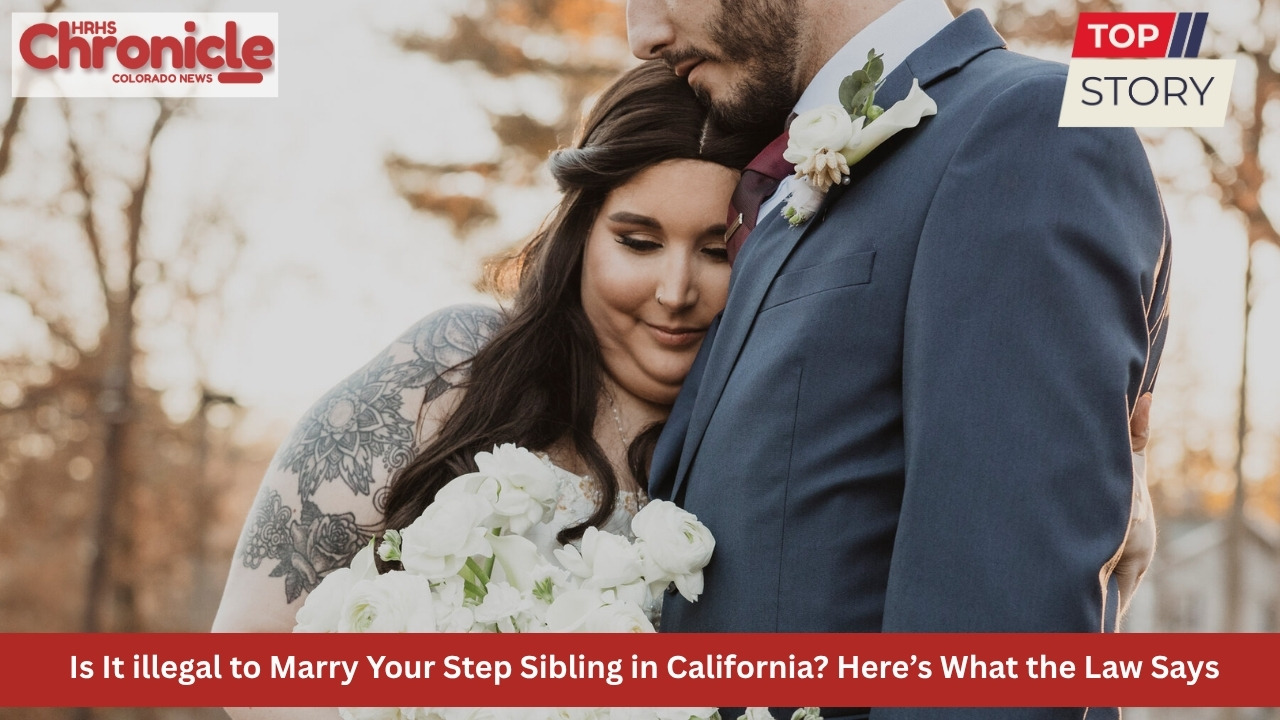California – Marriage laws can feel like a maze, especially when it comes to complex family dynamics and “what if” scenarios. If you’re living in California—or thinking of moving to one of its vibrant cities like Los Angeles, San Francisco, San Diego, or Sacramento—understanding the law around marriage to a step-sibling is essential. This comprehensive guide explores the legal, social, and practical considerations of marrying a step-sibling in California, investigating what the statutes say, how courts have interpreted the law, and what this means for couples.
Understanding Step-Sibling Relationships
A step-sibling is not a blood relative. Instead, the relationship comes about when one’s parent marries someone else who also has children. For example, if your mother marries someone who already has kids from a previous relationship, those children become your step-siblings.
The key distinction here is the absence of any biological or genetic connection. This legal and social definition is critical to how California approaches marriage between step-siblings, setting it apart from relationships like half-siblings, which do share blood ties.
What California Law Says About Marrying Step-Siblings
California is known for having some of the most progressive family laws in the United States. To determine whether you can legally marry your step-sibling in California, it’s necessary to examine a few core statutes. But in short, no, it is not illegal to marry your step-sibling in California. The law does not prohibit marriage between step-siblings because they are not related by blood.
Incest Laws in California
California Penal Code Section 285 and Family Code Section 2200 spell out with detail which relationships are considered incestuous and therefore strictly prohibited for marriage. These include:
- Parent and child (of any degree)
- Grandparent and grandchild
- Siblings—both whole and half-blood
- Uncle and niece, aunt and nephew
These laws were designed with the primary intention of preventing unions between close blood relatives, especially to avoid health risks that come with close genetic ties. Marriage or sexual relations between the above categories are not only void but constitute a felony offense with severe consequences.
Where Step Siblings Fit In
Step-siblings do not share blood ties. According to the plain language and legislative intent behind California’s incest statutes, marriages between step-siblings are not prohibited. California courts and legal professionals consistently interpret this distinction as permitting marriage between step-siblings so long as no other bars to marriage exist (for instance, age, consent, or pre-existing marriages).
This means that, under California law, two adults who are step-siblings due to their parents’ marriage can legally marry each other. This applies across all California cities, from San Jose to Fresno, Santa Barbara to Riverside.
Marriage and Family Structures in Modern California
California, as the most populous state in the U.S., is home to a rich diversity of family arrangements:
- Over 13 million married couples live in California.
- The 2020 Census reported more than 1.5 million “blended families” in the state, a term that encompasses families with a mix of biological children, stepchildren, and children from previous relationships.
Blended families are especially common in metropolitan areas like Los Angeles, San Diego, and San Francisco, reflecting changing norms and the increasing complexity of family life.
Is It Socially Acceptable to Marry a Step-Sibling in California?
Legal permission is just one aspect. In practice, the social acceptability of marrying a step sibling can vary greatly depending on family dynamics, community opinion, and cultural backgrounds.
- In urban centers like Los Angeles or Oakland, where diversity and nontraditional family arrangements are more common, the marriage of step siblings is less likely to raise eyebrows.
- In smaller towns or more traditional communities, there may still be a social stigma, even though the law fully permits it.
Social attitudes are shifting, with younger generations generally more accepting of non-blood relationships leading to marriage, especially when such relationships develop in adulthood rather than childhood.
Examples and Scenarios
Raised as Step Siblings from Childhood
If two children are raised together as step siblings in a blended household, their eventual romantic relationship may prompt more personal and familial concerns. While legally allowed, such situations can cause confusion or discomfort within the family, especially where strong sibling bonds have developed.
Step Siblings Who Meet as Adults
More commonly, step sibling romances develop when families blend later in life, or if the step siblings meet as adults. In these cases, the lack of a shared childhood experience minimizes the sense of taboo and makes social acceptance easier.
Impact of Parental Relationships
California law does not invalidate a marriage between step siblings if the parents’ marriage subsequently ends, nor does a parental divorce affect the legality of a pre-existing step sibling marriage.
Legal Restrictions in Other States
California’s approach is one of the more permissive in the United States. While most states allow step sibling marriages, a small number of jurisdictions limit or scrutinize them. For Californians thinking of moving, it’s prudent to review the particular laws in their destination state.
Addressing Common Misconceptions
Isn’t Marrying a Step Sibling “Incest”?
In California, incest is strictly defined as involving people with direct biological kinship—parents, grandparents, siblings by blood, uncles, aunts, nephews, nieces. Step-siblings without shared genetic heritage are exempt from these definitions.
Can Step-Siblings Who Are Adopted Siblings Marry?
Adopted siblings are treated differently under the law. While not typically considered blood relatives, some states—and even some local rules within California—may have specific provisions regarding marriage between siblings adopted into the same family. However, step-siblings (not adopted as siblings) face no such restrictions.
The Application Process for Step-Sibling Marriage in California
The marriage license process does not require applicants to indicate step sibling status. The California Marriage License Application asks for basic identifying information and affirmations regarding age, marital status, and lack of close blood relation. Step siblings are permitted to complete the process just like any other unrelated couple.
Couples can apply in any county county clerk’s office—from the historic San Francisco City Hall to the bustling Los Angeles County registrar—without fear of their relationship as step siblings barring them from legal recognition.
Famous Examples and Hollywood Stories
California’s Hollywood history is dotted with colorful family stories, and while celebrity step-sibling marriages are rare, the idea has played into TV dramas and films. As blended families become more common in places like Burbank, Studio City, and beyond, these storylines increasingly mirror real life.
Statistics on Blended Families in California
-
Los Angeles County, the most populous in the nation, is home to hundreds of thousands of blended families, with step sibling relationships forming a significant proportion.
-
According to the Public Policy Institute of California, nearly 30% of California households involve children living with half-siblings, step-siblings, or step-parents.
This high prevalence contributes to the state’s familiarity and legal flexibility regarding stepfamily arrangements.
Marriage Stats and Trends
-
California issues more than 200,000 marriage licenses each year, with Los Angeles, San Diego, and Orange counties leading the way.
-
The divorce rate in California hovers around 60% over a lifetime, contributing to the growing number of blended families and the increased occurrence of step sibling relationships.
Considerations Before Marrying Your Step-Sibling
While the law is clear, there are important personal and practical matters to consider before marrying a step sibling in California:
Family Reactions: Relationships among step siblings can evoke strong feelings among parents, siblings, and extended family, leading to potential family stress or rifts.
Children and Parenting: If either partner has children, blending the family further can introduce challenges requiring open communication and thoughtful planning.
Social Dynamics: As with any marriage, couples may find that friends or associates are curious or hold strong views. Discussing boundaries and expectations as a couple is helpful.
Legal Paperwork: Marriages in California ensure rights to inheritance, property, and health care decisions. Step sibling spouses enjoy all protections and responsibilities as any other married couple.
Counseling: Some couples benefit from pre-marital or family counseling to help navigate family dynamics and set expectations for their new life together.
Addressing Unique Questions
If Our Parents Are Married, Can We Still Get Married?
Yes. The law recognizes that step sibling relationships lack the genetic component that underpins incest laws. Whether the parental marriage still exists or ended in divorce, step siblings remain legally eligible to marry.
Can Step Siblings Be Married in a Religious Ceremony?
Religious institutions have their own guidelines for marriage. While most focus on prohibiting unions between biological siblings or close relatives, some religious communities may have traditions or rules around step sibling marriages. It’s best to consult with a local religious leader in your community, be it in Anaheim, Santa Monica, or Berkeley.
Moving Beyond California: National and Global Context
While California is permissive regarding step sibling marriage, the picture varies worldwide:
-
In the United States, almost all states allow marriage between step siblings.
-
Virginia is one of the rare exceptions, where restrictions exist.
-
In other countries, such as the United Kingdom, step sibling marriage is also generally legal, but the specifics can depend on family history and religious law.
Steps to Get Married as Step-Siblings in California
Ready to tie the knot? Here’s a brief overview of the marriage process specific to California couples—including step siblings.
Marriage License: File for a marriage license at any county clerk’s office. Both partners must be present.
Documentation: Bring identification such as a driver’s license or passport. In cities like San Diego or San Francisco, the process is streamlined and appointment-based.
Waiting Period: California does not impose a waiting period; you can marry immediately after license issuance.
Ceremony: A legal marriage ceremony, officiated by an authorized officiant, is required.
Record Filing: Signed marriage certificates are typically filed by your officiant with the county.
Myths and Frequently Asked Questions
Myth: “Marrying a step sibling is the same as marrying your own sibling.”
Truth: In California, only marriages between blood relatives of specified degrees are prohibited. Step siblings have no genetic overlap and are treated as unrelated under the law.
Myth: “A parental divorce will automatically end a marriage between step siblings.”
Truth: Once married, your marital status is distinct and not affected by changes to your parents’ relationship.
Myth: “Cities like Los Angeles and San Francisco have stricter local laws about step sibling marriage.”
Truth: Family and marriage laws in California are determined at the state level, applying equally in all cities and counties.
Unique Situations
International Marriages: If a married step sibling couple moves abroad, local laws may differ. Check the destination country’s marriage recognition policies.
Children’s Legal Status: Children born to step sibling couples are legally legitimate and have the same status as any other child born to a married couple.
Closing Thoughts
California is a state of reinvention, openness, and diversity. Its laws reflect the modern realities of blended families, ensuring individuals are free to marry as they choose—so long as no close blood relationship exists. Marrying a step sibling in California is entirely legal and recognized by all state and local authorities, regardless of which city you live in or move to.
Blended families are now so common that the California Department of Public Health estimates nearly one-third of new marriages each year involve at least one partner who has children from a previous relationship. With such evolving demographics, the focus for step sibling couples, as with all marriages, is on open communication, mutual respect, and building a loving partnership.
Whatever your path, understanding the law provides clarity and freedom as you plan your life together in the Golden State. Whether you’re applying for a marriage license in San Francisco, holding a ceremony in Los Angeles, or building a blended family in Riverside, California law stands firmly on your side.
Helpful Links
- https://www.reddit.com/r/legaladvice/comments/7e385c/can_i_marry_my_potential_stepsister/
- https://www.reddit.com/r/todayilearned/comments/eokg7l/til_that_it_is_legal_for_stepsiblings_to_marry_in/
- https://en.wikipedia.org/wiki/Legality_of_incest_in_the_United_States
- https://www.rgpattorney.com/estate-planning-for-california-blended-families/
- https://law.justia.com/codes/california/2010/pen/281-289.6.html
- https://en.wikipedia.org/wiki/Cousin_marriage_law_in_the_United_States

Mrs. Odice has been a teacher here for 9 years. She likes yoga and spends most of her time with her 3 kids. She also grew up going to Douglas County schools and is Canadian.















Leave a Reply